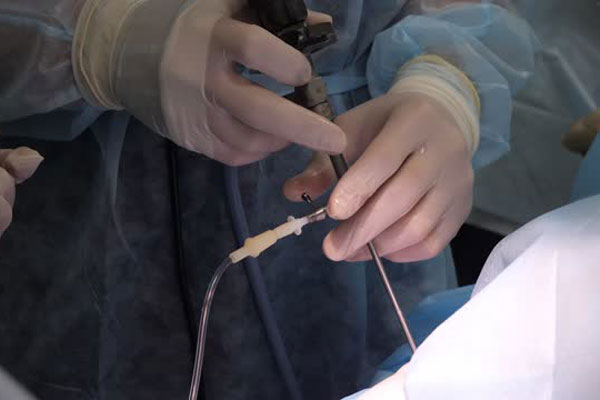Diagnostic Arthroscopy
Our skeletal framework is comprised of 206 bones that are associated with one another, giving a fundamental system to stance, development, and weight-bearing. In spite of their hardness and strength, bones are powerless against a wide assortment of wounds.
Albeit most bone wounds are clear on routine actual assessments and tests like X-beams, CT filters, and so on, at times the muscular specialist might have to glimpse inside the joint to analyze a joint condition.
What is diagnostic arthroscopy?
Arthroscopy is a negligibly intrusive method performed using a device with a little camera mounted on it and specific instruments. Not at all like open medical procedures, the methodology includes little cuts that heal quicker and better. The arthroscopy assists with picturing, analyzing, and treating different issues connected with bone and joint circumstances. An indicative arthroscopy is utilized to see inside the harmed joints and check for illness or harm inside them.

Indications for diagnostic arthroscopy
The system is generally utilized for diagnosing wounds affecting joints like knees, lower legs, shoulders, elbows, wrists, and hips.
Probably the most continuous circumstances that are analyzed by arthroscopic assessments of joints are:
- Synovitis: An inflammation of the cartilage lining in the knee, shoulder, elbow, wrist, or ankle.
- Intense or persistent injury of tendons in the shoulder, knee, wrist, and ligament.
- Bits of torn ligament that are free in the joint.
- Some restricted use in joint pain conditions.
Symptomatic arthroscopy is additionally suggested alongside other surgeries like rotator cuff medical procedures, the arrival of carpal passage conditions, and so on, to see and survey the degree of harm.
What are the pre-procedure care for diagnostic arthroscopy?
Prior to having an arthroscopy, your overall well-being will be evaluated. Your doctor will ask about your clinical history and way of life propensities and may suggest a few changes depending on which of your joints is impacted. By and large, your medical services group might suggest:
- Do not eat or drink anything after 12 p.m. upon the arrival of your strategy.
- To quit taking specific medications that might increase your risk of dying, similar to headache medicine.
- To sort out free and open apparel to wear after the strategy, and furthermore, to make game plans to have somebody drive you home.
How diagnostic arthroscopy is performed?
However, every strategy will differ, but by and large, demonstrative arthroscopy follows this cycle:
- You'll be in the best position for the technique to upgrade permeability inside the joint. You might be asked to lie on your back or on your side.
-
The procedure is generally done under sedation. An individual from the sedation group will discuss with you before the medical procedure the decision to use sedation. The types of sedation utilized are:
- Local anesthesia: This numbs limited region, for example, just your knee joint or hip joint, and so on.
- Regional anesthesia: This impedes the sensation in the base portion of your body (below your midriff), but you stay alert
- General anesthesia: which keeps you oblivious all through the methodology.
- A little entry point is made on the impacted joint, and the arthroscope is embedded. A sterile arrangement is infused to grow the region around the joint and to help clear pictures through the embedded camera.
- The perspective on the arthroscope is sent to an outer screen.
- A remedial medical procedure (if necessary) might be finished during the underlying indicative method by making extra entry points through which the particular instruments are embedded.
- After the method, the instruments are taken out, and the cuts will be covered with a dressing or swathe.
What is the post-procedure care?
Diagnostic arthroscopy is completed on a short-term basis, so you can get back around the same time the surgery is performed. The system generally doesn't take long, and you will be moved to the recuperation room not long after the strategy. Prior to being released, you will be given a bunch of guidelines to observe for a quick recuperation, along with a subsequent visit plan.
Post-procedure care may include:
- Medications: A drug might be recommended to assuage agony and aggravation. Now and again, anticoagulant drugs like ibuprofen are endorsed to forestall the risk of blood clusters.
-
R.I.C.E therapy: Your primary care physician might suggest R.I.C.E. treatment to diminish agony and expand and accelerate recuperation. The treatment incorporates:
- Rest: Avoid exercises that cause torment. A total rest for the area will accelerate the recuperation.
- Ice: Apply an ice or cold pack to the sensitive region to forestall or limit expansion. Ensure that you are not applying an ice pack directly to the skin.
- Compression: Wrap the region with a versatile swathe to diminish expansion and torment. It likewise goes about as a help and will lessen the strain around there.
- Elevation: Keep the region above heart level to decrease the expansion, as the liquids will create some distance from the harmed region.
- Dressing care: It is vital to keep the cut dressing perfect and dry. You might be encouraged to put a cover or sack over the dressing while at the same time showering.
- Work outs: To reestablish movement and fortify joints, your PCP will recommend non-intrusive treatment and restoration.
One can generally continue their ordinary exercises soon after the medical procedure. In any case, the recuperation time differs depending on the system and post-methodology care.
Outlook
Arthroscopy is essentially a straightforward, demonstrative device to imagine and recognize joint wounds. The strategy is additionally used to deal with specific knee conditions like meniscal tears, expulsion of synovial tissue, treating knee contaminations, and so forth, and the recuperation time additionally fluctuates as needed. By and large, one can get back to work or do different exercises within a couple of days of the strategy, but full recuperation might require a while. Keep your specialist's rules and recovery plan in mind for a fruitful result from the arthroscopic strategy.